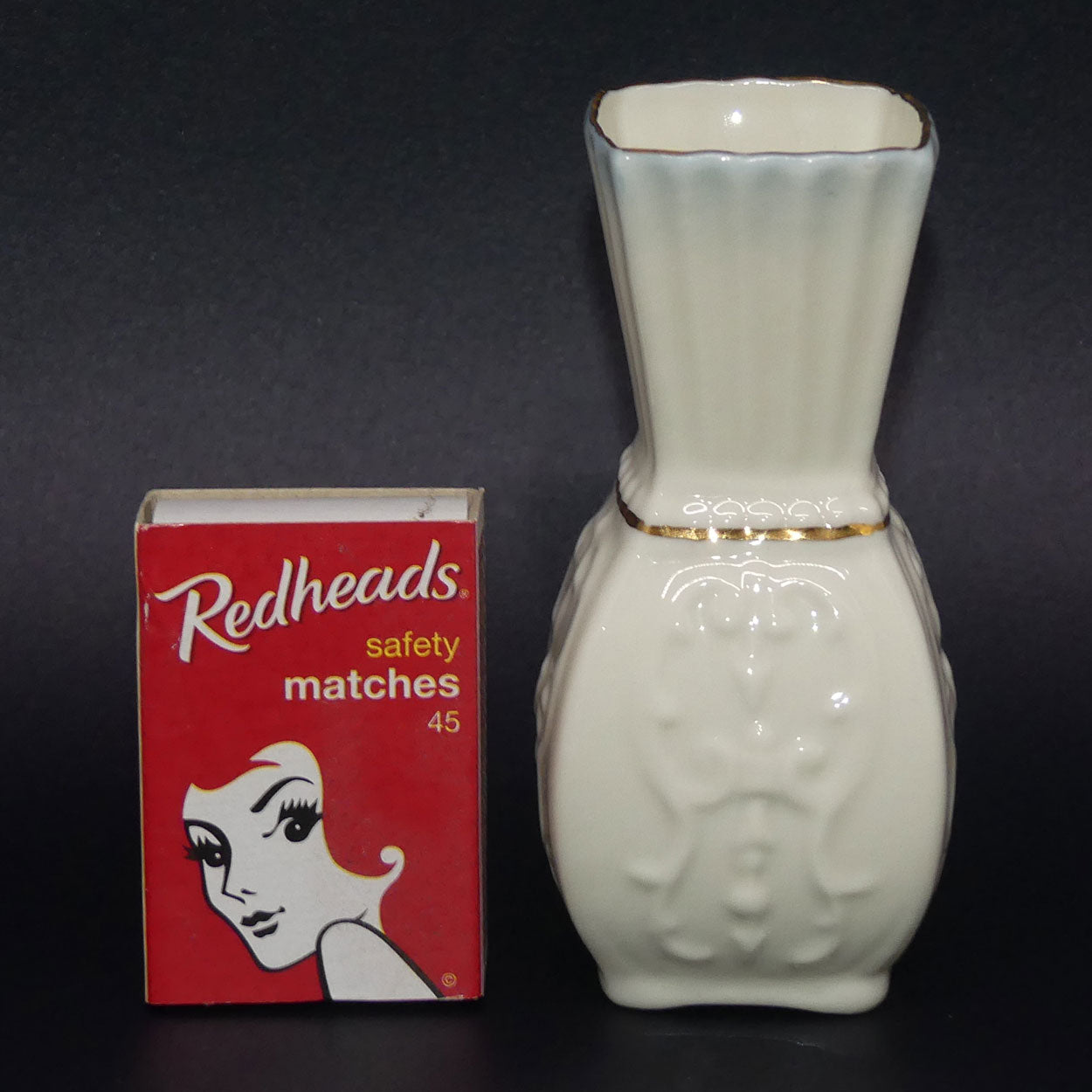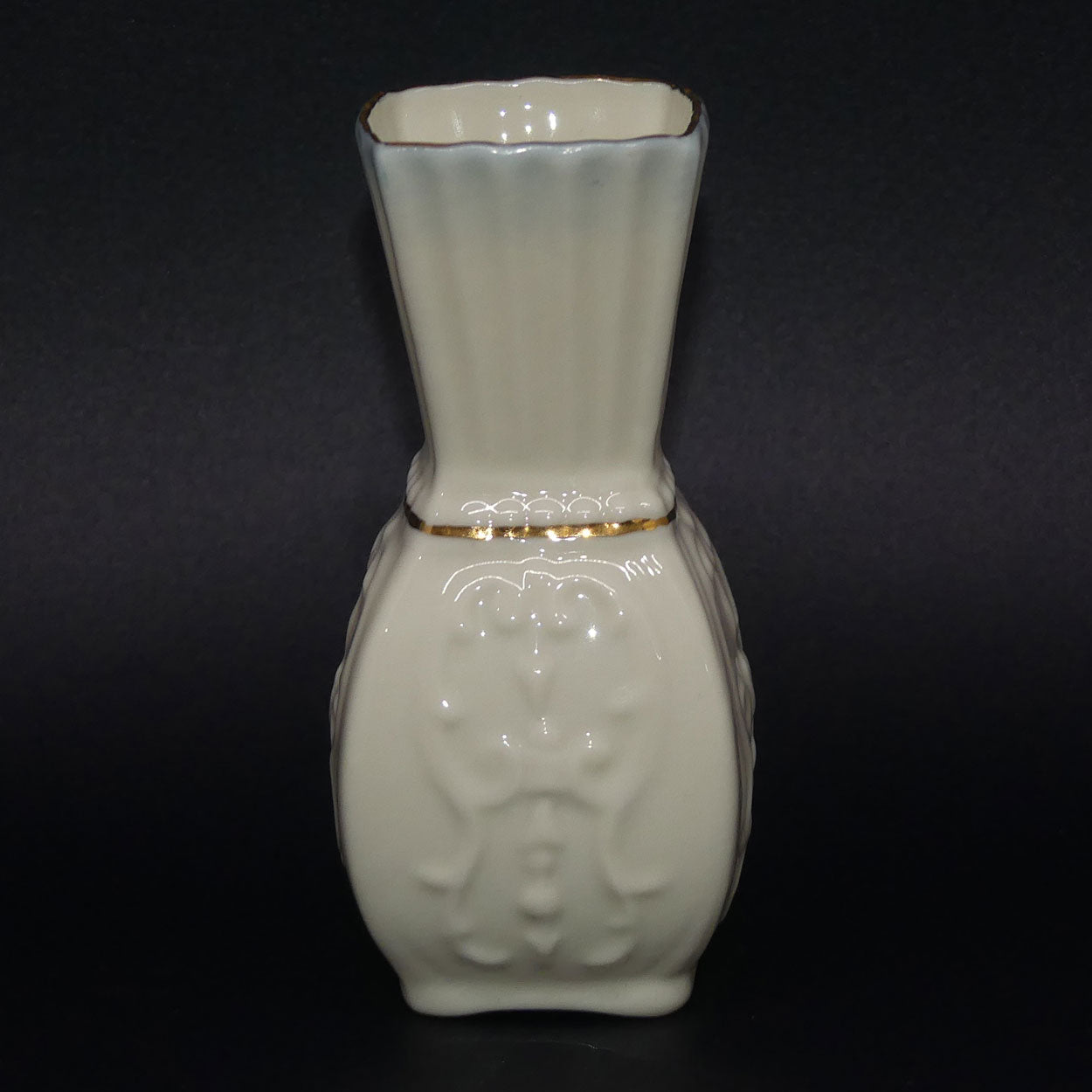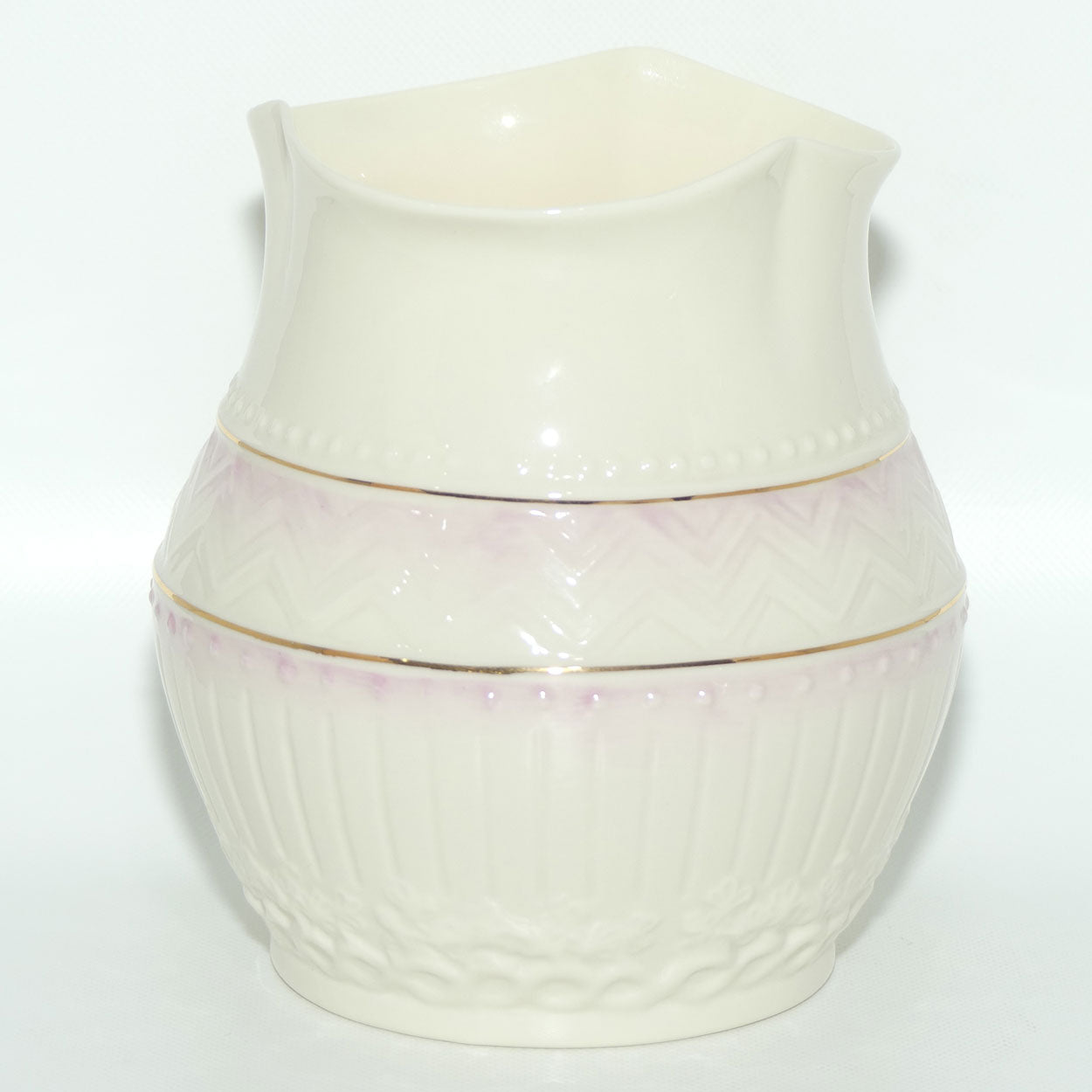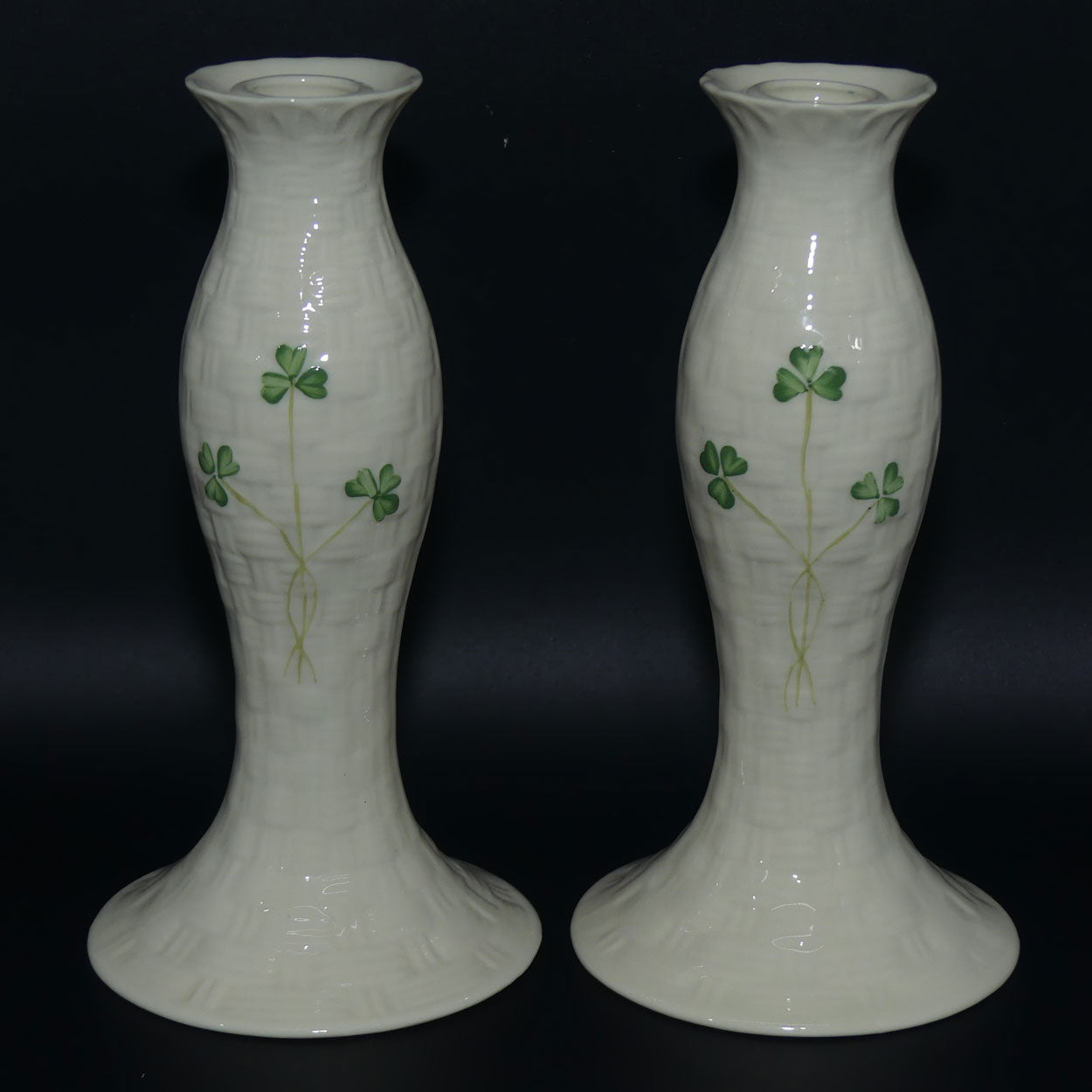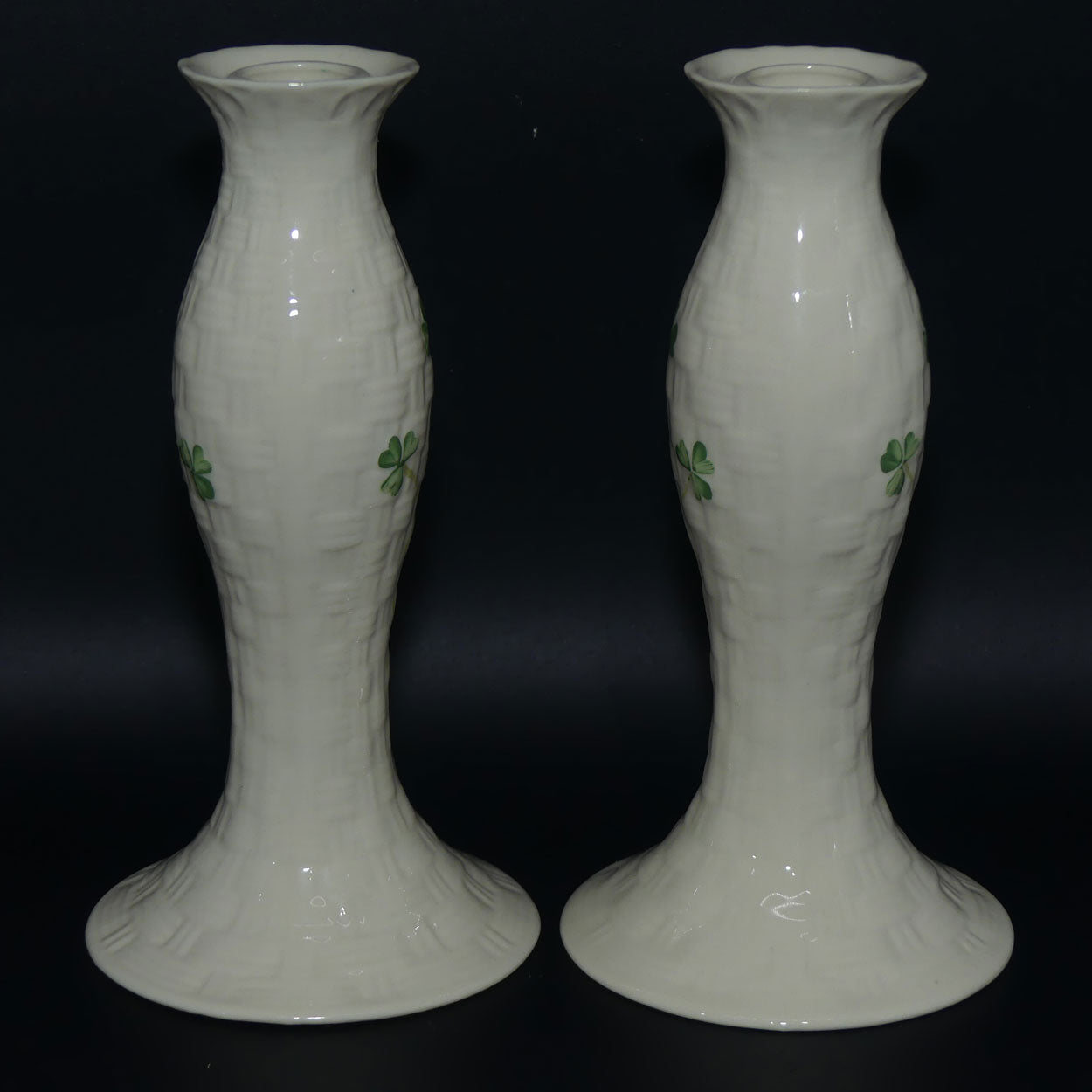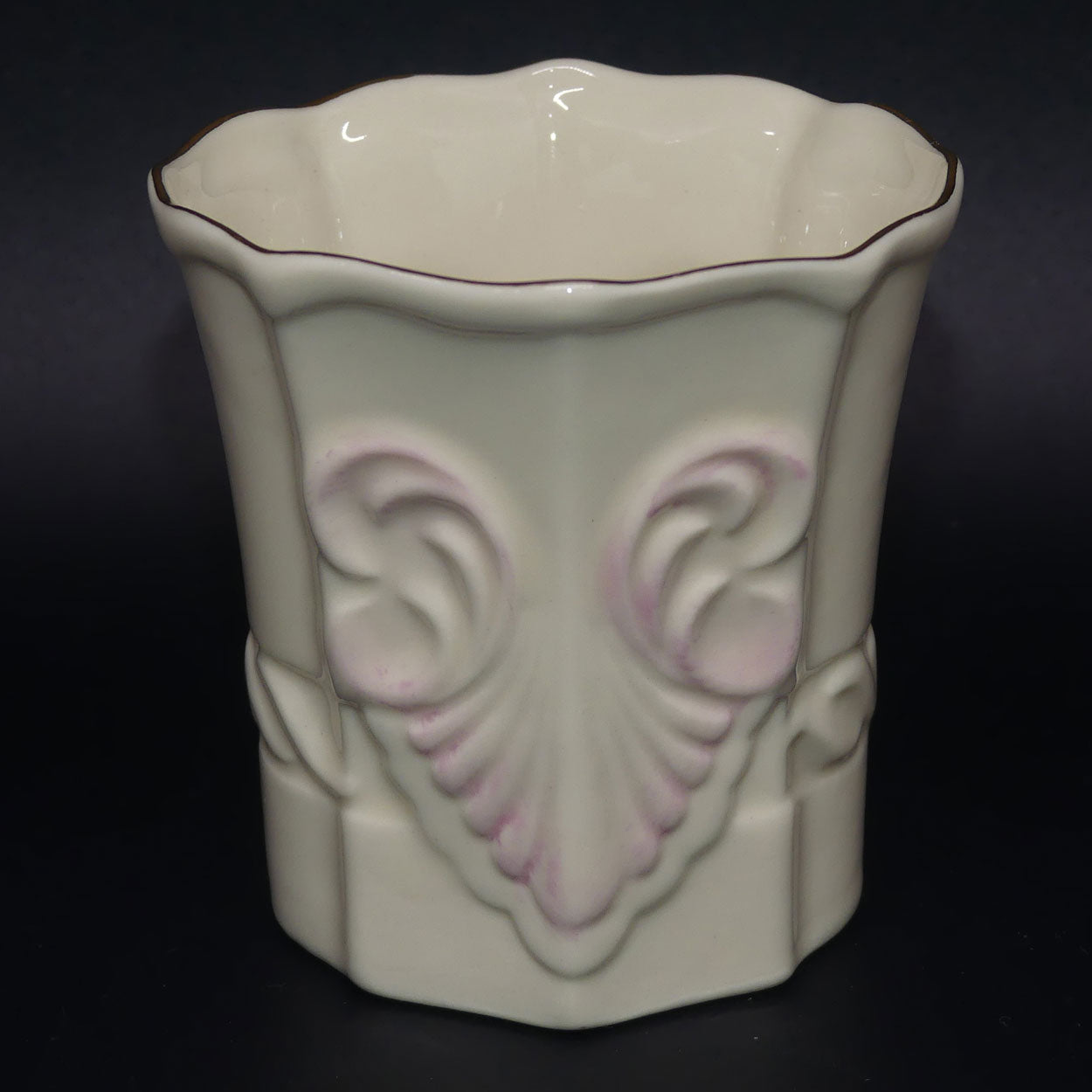In setting up a pottery business, Bloomfield managed to get a railway line built to Belleek so that coal could be delivered with which to fire kilns. Building started on the pottery in 1858. Initially starting with domestic products, it wasn't until 1863 that small amounts of the Parian porcelain for which Belleek is famous for to this day, was successfully produced. By 1865, the prestige of the company had increased enough that its market included Australia, Canada, England, Ireland, and the United States, and customers included the Prince of Wales, Queen Victoria and the nobility.
Belleek can be readily identified by the backstamps used - which now total 14 - the earliest stamps being the 1st, 2nd and 3rd Black marks (then followed by Green, Gold, Blue, Green, Grey and Brown)
The Belleek factory produces porcelain that is characterised by its thinness, and slightly iridescent surface and that the body is formulated with a significant proportion of frit. Belleek collectors love its quality decoration which have a heavy Irish and Celtic theme - be that finely painted Shamrocks, vases decorated with Harps, floral encrusted baskets or shell or basket weaved pattern teaware.



